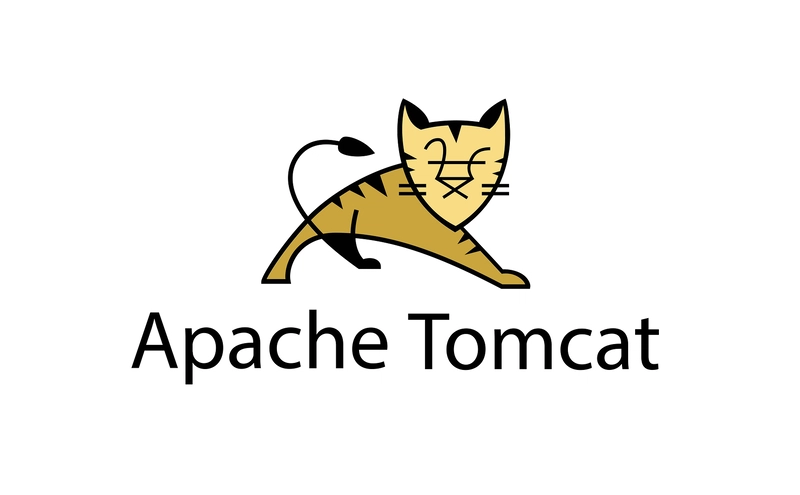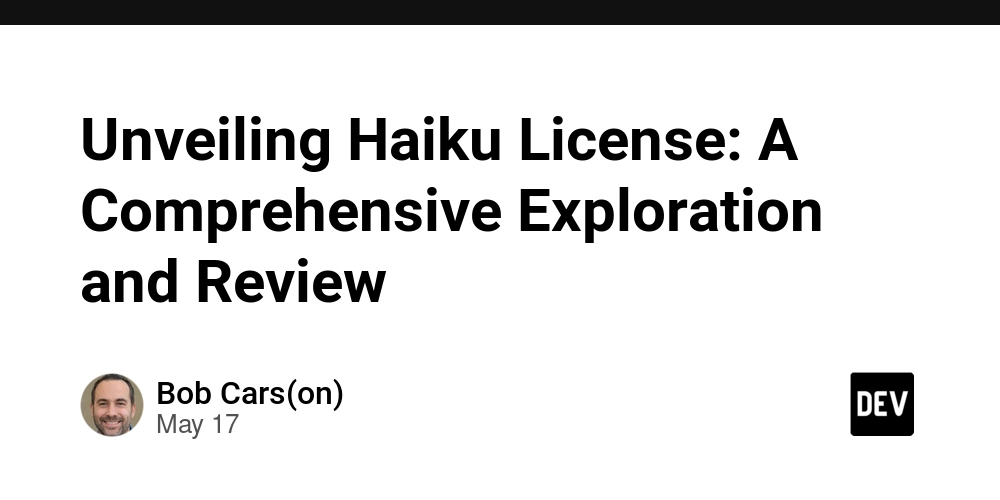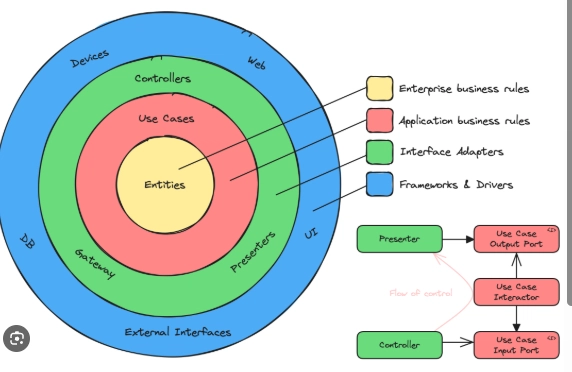Overlooked SaaS Marketing Tactics for Developers (Inspirations from SaaSGains Insights)
With the saturated SaaS landscape of today, having a fantastic product is just half the job. Marketing it well, particularly if you're a developer-led SaaS founder, is the real challenge. Though paid advertising, search engine optimization, and social media advertising are popular topics, countless unsung marketing tactics can power organic growth, develop trust, and create a long-term customer acquisition engine. Learning from SaaSGains' data-backed insights, this piece delves into not-so-well-known SaaS marketing strategies that can be adopted by developers to differentiate themselves without breaking their bank. 1. Technical SEO Gone Beyond Keywords Most SaaS businesses are overly obsessed with keyword research and content creation. While both are critical, developers pay less attention to the technical aspects of SEO, a field where they can dominate. Strategies to adopt: Optimize page load speeds using contemporary frameworks such as Next.js or Astro. Make sure your site structure is tidy, with sensible internal linking. Apply schema markup to increase search visibility. Utilize developer-oriented SEO tools such as Ahrefs Webmaster Tools and Screaming Frog to audit and optimize your SaaS site. SaaSGains reports that SaaS sites that addressed technical SEO bottlenecks experienced a 27% rise in organic signups within 3 months, without adding new content. 2. Creating Side-Project Marketing Machines Following the success of such businesses as HubSpot's Website Grader and Ahrefs' free tools, programmers can build free tools, calculators, or micro-SaaS projects that their target audience is drawn to. Examples: Design a "Home Inspection Cost Estimator" in case your SaaS is aimed at property professionals. Develop niche productivity tools that discreetly promote your main SaaS offering. Provide APIs or open-source SDKs as lead magnets. SaaSGains states that SaaS products with complementary side projects have 3x more backlinks and social mentions, driving long-term SEO and word-of-mouth growth. 3. Developer-Centric Community Marketing Instead of generic forums, developers should focus on developer-centric platforms such as GitHub, Reddit (subreddits such as r/SaaS, r/webdev), Indie Hackers, and Stack Overflow. Actionable steps: Post useful code snippets or templates affiliated with your SaaS. Participate in AMA (Ask Me Anything) sessions as a founder or CTO. Document your SaaS build process openly on forums. This method builds authority while establishing genuine connections, tending to create inadvertent virality. As SaaSGains points out, organic threads from actual users referencing a SaaS product convert 8x more compared to paid advertising. 4. Partnership-Driven Growth Although cold outreach is typical, strategic partnerships are an untapped strategy for developer-driven SaaS companies. Partnership types to pursue: Cross-promote with complementary SaaS platforms (e.g., CRMs, property management software). Package your product as an add-on within larger SaaS platforms (e.g., Zapier, Shopify). Partner with local service providers (e.g., home inspection companies, if applicable) to develop co-branded products. SaaSGains states that partnership-based deals have higher retention rates because customers regard your SaaS as part of a solution. 5. Using Customer Stories Early and Often Most developers underplay the capability of storytelling. Beyond reviews, well-specified use cases and customer journey blog posts are very undervalued. Best practices: Speak to early adopters and convert their success into in-depth case studies. Write "Before & After" stories about how your SaaS improved a process. Emphasize specific metrics (time saved, revenue boost, error rate decrease) to establish credibility. SaaSGains' research indicates that B2B SaaS sites with notable case studies see a 40% increase in demo requests. 6. Long-Tail Pain Point SEO Rather than targeting solely high-volume keywords such as "SaaS for home inspection," go for pain point-based searches such as "how to automate home inspection reports" or "best tools for property inspection teams." Actions to take: Utilize tools such as AnswerThePublic, AlsoAsked, or even ChatGPT to generate pain-based keywords. Make tutorials, templates, and checklists that answer those questions. Optimize for featured snippets and "People Also Ask" boxes. By capturing intent-driven traffic, SaaS startups have the opportunity to reap higher conversion rates. SaaSGains data indicates that long-tail content converts 2.5x better than generic product pages. Concluion SaaS marketing doesn't have to be rocket science, particularly for developers. By honing in on underappreciated, authentic, and community-based approaches, SaaS founders can skip out on pricey, noisy channels and build their own growth loops. SaaSGains insights remind us that the best marketing usually stems f

With the saturated SaaS landscape of today, having a fantastic product is just half the job. Marketing it well, particularly if you're a developer-led SaaS founder, is the real challenge. Though paid advertising, search engine optimization, and social media advertising are popular topics, countless unsung marketing tactics can power organic growth, develop trust, and create a long-term customer acquisition engine.
Learning from SaaSGains' data-backed insights, this piece delves into not-so-well-known SaaS marketing strategies that can be adopted by developers to differentiate themselves without breaking their bank.
1. Technical SEO Gone Beyond Keywords
Most SaaS businesses are overly obsessed with keyword research and content creation. While both are critical, developers pay less attention to the technical aspects of SEO, a field where they can dominate.
Strategies to adopt:
- Optimize page load speeds using contemporary frameworks such as Next.js or Astro.
- Make sure your site structure is tidy, with sensible internal linking.
- Apply schema markup to increase search visibility.
- Utilize developer-oriented SEO tools such as Ahrefs Webmaster Tools and Screaming Frog to audit and optimize your SaaS site.
SaaSGains reports that SaaS sites that addressed technical SEO bottlenecks experienced a 27% rise in organic signups within 3 months, without adding new content.
2. Creating Side-Project Marketing Machines
Following the success of such businesses as HubSpot's Website Grader and Ahrefs' free tools, programmers can build free tools, calculators, or micro-SaaS projects that their target audience is drawn to.
Examples:
- Design a "Home Inspection Cost Estimator" in case your SaaS is aimed at property professionals.
- Develop niche productivity tools that discreetly promote your main SaaS offering.
- Provide APIs or open-source SDKs as lead magnets.
SaaSGains states that SaaS products with complementary side projects have 3x more backlinks and social mentions, driving long-term SEO and word-of-mouth growth.
3. Developer-Centric Community Marketing
Instead of generic forums, developers should focus on developer-centric platforms such as GitHub, Reddit (subreddits such as r/SaaS, r/webdev), Indie Hackers, and Stack Overflow.
Actionable steps:
- Post useful code snippets or templates affiliated with your SaaS.
- Participate in AMA (Ask Me Anything) sessions as a founder or CTO.
- Document your SaaS build process openly on forums.
This method builds authority while establishing genuine connections, tending to create inadvertent virality. As SaaSGains points out, organic threads from actual users referencing a SaaS product convert 8x more compared to paid advertising.
4. Partnership-Driven Growth
Although cold outreach is typical, strategic partnerships are an untapped strategy for developer-driven SaaS companies.
Partnership types to pursue:
- Cross-promote with complementary SaaS platforms (e.g., CRMs, property management software).
- Package your product as an add-on within larger SaaS platforms (e.g., Zapier, Shopify).
- Partner with local service providers (e.g., home inspection companies, if applicable) to develop co-branded products.
SaaSGains states that partnership-based deals have higher retention rates because customers regard your SaaS as part of a solution.
5. Using Customer Stories Early and Often
Most developers underplay the capability of storytelling. Beyond reviews, well-specified use cases and customer journey blog posts are very undervalued.
Best practices:
- Speak to early adopters and convert their success into in-depth case studies.
- Write "Before & After" stories about how your SaaS improved a process.
- Emphasize specific metrics (time saved, revenue boost, error rate decrease) to establish credibility.
SaaSGains' research indicates that B2B SaaS sites with notable case studies see a 40% increase in demo requests.
6. Long-Tail Pain Point SEO
Rather than targeting solely high-volume keywords such as "SaaS for home inspection," go for pain point-based searches such as "how to automate home inspection reports" or "best tools for property inspection teams."
Actions to take:
- Utilize tools such as AnswerThePublic, AlsoAsked, or even ChatGPT to generate pain-based keywords.
- Make tutorials, templates, and checklists that answer those questions.
- Optimize for featured snippets and "People Also Ask" boxes.
By capturing intent-driven traffic, SaaS startups have the opportunity to reap higher conversion rates. SaaSGains data indicates that long-tail content converts 2.5x better than generic product pages.
Concluion
SaaS marketing doesn't have to be rocket science, particularly for developers. By honing in on underappreciated, authentic, and community-based approaches, SaaS founders can skip out on pricey, noisy channels and build their own growth loops.
SaaSGains insights remind us that the best marketing usually stems from really knowing your users' pain points, creating solutions for them, and appearing where your audience already resides.
For SaaS developers who are willing to venture outside of their code editor and try out these tactics, the returns can be exponential.








![Epic Games: Fortnite is offline for Apple devices worldwide after app store rejection [updated]](https://helios-i.mashable.com/imagery/articles/00T6DmFkLaAeJiMZlCJ7eUs/hero-image.fill.size_1200x675.v1747407583.jpg)































































































































































![[The AI Show Episode 146]: Rise of “AI-First” Companies, AI Job Disruption, GPT-4o Update Gets Rolled Back, How Big Consulting Firms Use AI, and Meta AI App](https://www.marketingaiinstitute.com/hubfs/ep%20146%20cover.png)


















































































































































































































































.png?width=1920&height=1920&fit=bounds&quality=70&format=jpg&auto=webp#)























![[Virtual Event] Strategic Security for the Modern Enterprise](https://eu-images.contentstack.com/v3/assets/blt6d90778a997de1cd/blt55e4e7e277520090/653a745a0e92cc040a3e9d7e/Dark_Reading_Logo_VirtualEvent_4C.png?width=1280&auto=webp&quality=80&disable=upscale#)











































































-xl-(1)-xl-xl.jpg)










![How to upgrade the M4 Mac mini SSD and save hundreds [Video]](https://i0.wp.com/9to5mac.com/wp-content/uploads/sites/6/2025/05/M4-Mac-mini-SSD-Upgrade-Tutorial-2TB.jpg?resize=1200%2C628&quality=82&strip=all&ssl=1)
![‘Apple in China’ book argues that the iPhone could be killed overnight [Updated]](https://i0.wp.com/9to5mac.com/wp-content/uploads/sites/6/2025/05/Apple-in-China-review.jpg?resize=1200%2C628&quality=82&strip=all&ssl=1)




![What’s new in Android’s May 2025 Google System Updates [U: 5/16]](https://i0.wp.com/9to5google.com/wp-content/uploads/sites/4/2025/01/google-play-services-1.jpg?resize=1200%2C628&quality=82&strip=all&ssl=1)












![iPhone 17 Air Could Get a Boost From TDK's New Silicon Battery Tech [Report]](https://www.iclarified.com/images/news/97344/97344/97344-640.jpg)
![Vision Pro Owners Say They Regret $3,500 Purchase [WSJ]](https://www.iclarified.com/images/news/97347/97347/97347-640.jpg)
![Apple Showcases 'Magnifier on Mac' and 'Music Haptics' Accessibility Features [Video]](https://www.iclarified.com/images/news/97343/97343/97343-640.jpg)
![Sony WH-1000XM6 Unveiled With Smarter Noise Canceling and Studio-Tuned Sound [Video]](https://www.iclarified.com/images/news/97341/97341/97341-640.jpg)










































![Apple Stops Signing iPadOS 17.7.7 After Reports of App Login Issues [Updated]](https://images.macrumors.com/t/DoYicdwGvOHw-VKkuNvoxYs3pfo=/1920x/article-new/2023/06/ipados-17.jpg)




























